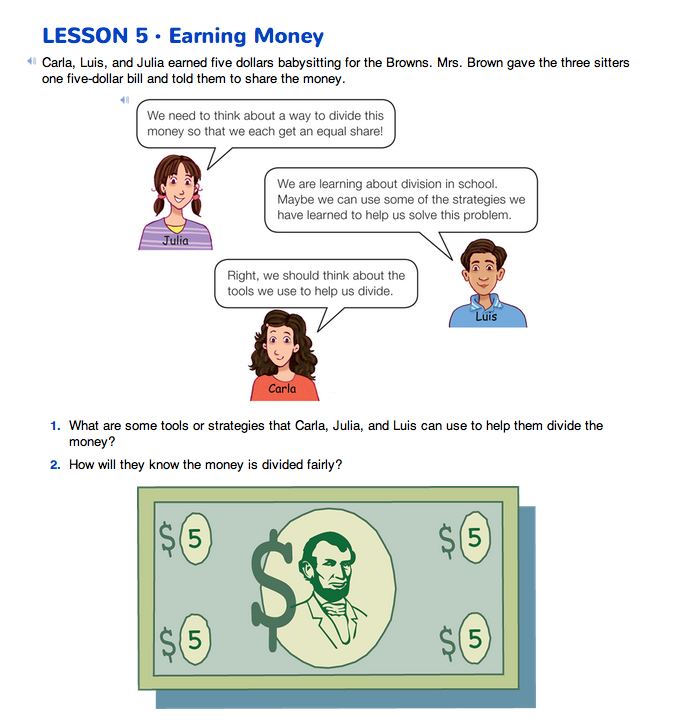Earning Money
Est. Class Sessions: 2Developing the Lesson
Part 1. Solving an Extended Response Problem
Launch Problem and Math Practice Expectations. Begin this lesson by reading the vignette on the Earning Money page of the Student Guide. Read Question 1 together and ask students to work with a partner to generate a list of tools and strategies that can help them divide the money equally among the three children.
After students have had a few minutes to discuss, ask:
After giving each student a copy of the Earning Money Problem Assessment Master, display a copy of the page and ask students to read the problem quietly as you read it aloud.
After reading the problem, ask:
Before students start working, direct them to the Math Practices page in the Student Guide Reference section. Ask students to read the Expectations with a partner and discuss how they can help guide their work. Students should focus on Expectations 3–6 since Expectations 1–2 were discussed earlier.
After students have had time to review the Expectations, ask:
Solve the Problem. Ask students to work individually to solve this problem and write their solutions. Encourage students to refer to the Math Practices page as they work.
Circulate through the room encouraging students and helping them to clarify their work using these or similar questions:
Students can choose different ways to solve this problem and may not necessarily use the division operation to find the answer, though all students need to interpret the remainder in some way. For example, one student (whose work is not included in this lesson), correctly solved the problem without having any money left over after deciding to buy bubble gum with the extra 2¢ and divide the bubble gum into three pieces. Another student decided to give each babysitter $1.50 and give the remaining 50¢ to the poor. These students did not share as much of the $5.00 as possible as required by the problem.













